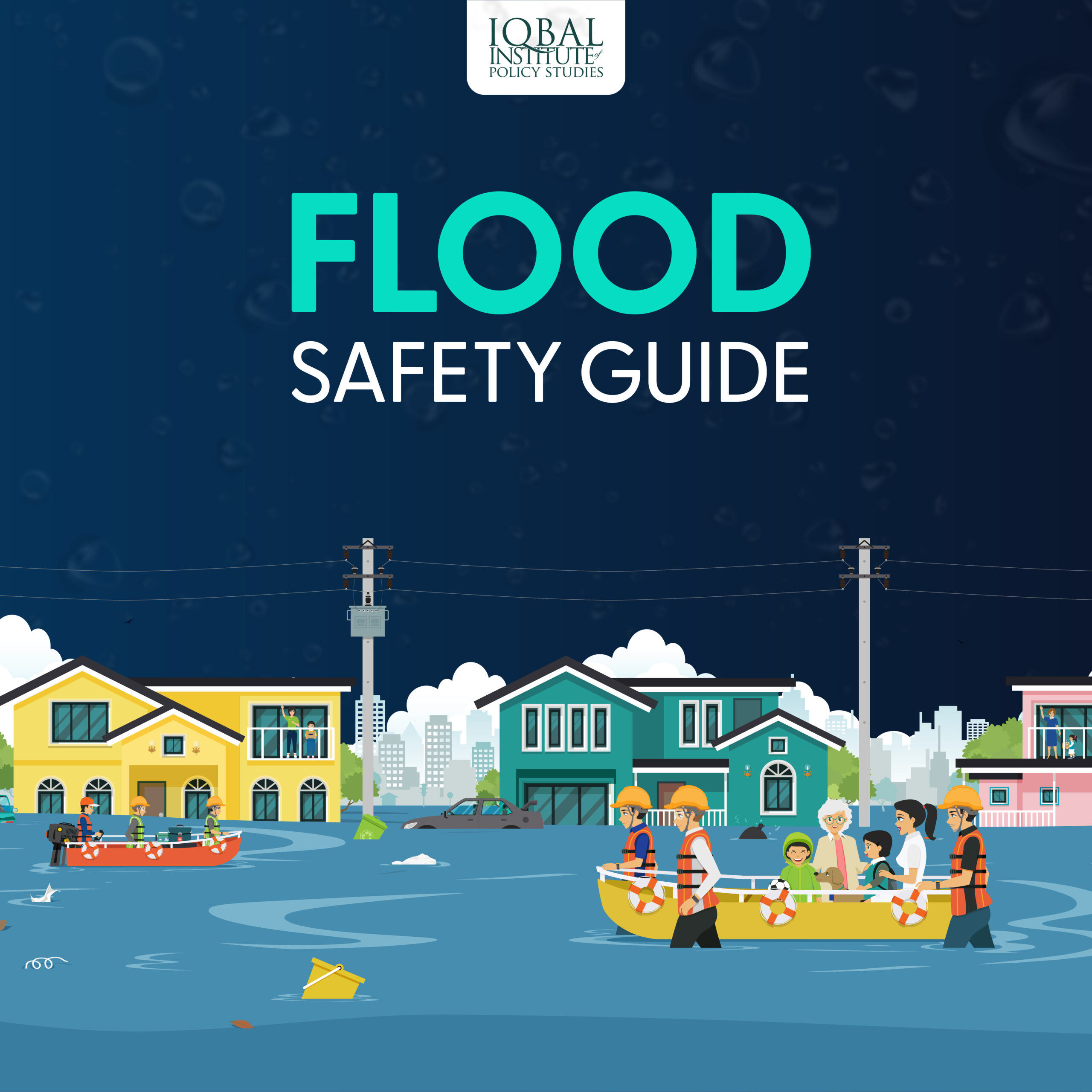Understanding Flood Risks: Your Guide To Flood Safety (Severe Weather Awareness Week Day 5)

Table of Contents
Identifying Your Flood Risk
Determining your personal flood risk is the first crucial step towards effective flood safety. Your risk depends on several interconnected factors, including your location, proximity to water bodies, historical flood data, and even the type of soil beneath your property. Ignoring these factors can lead to devastating consequences.
Using Floodplain Maps
One of the most effective tools for assessing your flood risk is consulting floodplain maps. These maps, often provided by the Federal Emergency Management Agency (FEMA) in the US, illustrate areas with a high probability of flooding. By inputting your address into FEMA's Flood Map Service Center (), you can determine your property's flood risk zone. Similar resources are available internationally; check with your local government or meteorological agency for equivalent services. Understanding your flood zone designation – whether it's a high-risk area or a moderate-risk one – is essential for informed decision-making.
Understanding Your Property's Vulnerability
Even within a low-risk flood zone, individual properties can vary greatly in their vulnerability to flooding. Several factors determine this vulnerability:
- Elevation: Properties at lower elevations are inherently more susceptible.
- Building Materials: Older buildings with inadequate waterproofing are at greater risk.
- Drainage Systems: Poor drainage around your property can exacerbate flooding.
- Basement Presence: Basements are particularly vulnerable to flooding.
Examples of vulnerable properties:
- Homes located near rivers, streams, or coastlines.
- Properties with basements or crawl spaces.
- Structures built on poorly drained soil.
Tips for assessing your individual vulnerability:
- Review your building permits to check for flood-resistant construction measures.
- Carefully examine your foundation for any signs of previous water damage.
- Assess your property's drainage system for efficiency and potential blockages.
Developing a Flood Safety Plan
Having a comprehensive flood safety plan in place before a flood strikes is paramount. This plan should cover evacuation procedures, emergency kit preparation, and property protection measures.
Creating an Evacuation Plan
Your evacuation plan should include:
- Multiple evacuation routes: Identify at least two different routes to higher ground or an evacuation shelter.
- Designated meeting point: Choose a safe location outside your flood-prone area where your family can reunite.
- Temporary housing options: Research potential temporary housing options, such as hotels or shelters, in case evacuation is necessary.
Assembling a Flood Emergency Kit
Your flood emergency kit should contain:
- Water: At least one gallon of water per person per day for several days.
- Food: Non-perishable food items that require no cooking.
- First-aid kit: A well-stocked kit with essential medications.
- Important documents: Copies of insurance policies, identification, and medical records (stored in a waterproof bag).
- Flashlight and extra batteries: For illumination during power outages.
- Radio: A battery-powered radio for weather updates.
Tips for storing your emergency kit:
- Keep it in a readily accessible location, preferably on an upper floor.
- Store it in a waterproof container to protect its contents.
Protecting Your Property
Taking proactive steps to protect your property can significantly reduce flood damage:
- Elevate electrical appliances and other valuable items.
- Reinforce basement walls and install waterproof sealant.
- Consider installing flood barriers or water-resistant materials.
Cost-effective measures: Moving valuable items to higher floors, sealing cracks and gaps in the foundation.
More advanced protection options: Installing sump pumps, backflow valves, and elevating the entire structure.
Responding to a Flood Warning
Heeding flood warnings and advisories from official sources like the National Weather Service (NWS) or your local emergency management agency is crucial. Prompt action can save lives and minimize property damage.
Evacuation Procedures
- Secure your property: Bring in loose items that could be swept away.
- Turn off utilities: Disconnect electricity, gas, and water to prevent further damage.
- Follow designated evacuation routes: Avoid flooded areas.
Staying Safe During a Flood
- Avoid floodwaters: Floodwaters can be contaminated and contain hidden hazards.
- Be aware of downed power lines: Never approach downed power lines – report them immediately.
- Monitor weather reports: Stay informed about the flood's progression.
What to do if trapped: Call emergency services immediately. If possible, seek higher ground or a sturdy structure. Signal for help if you can. How to assist others safely: Only attempt a rescue if it doesn't put your own life at risk.
Post-Flood Recovery and Insurance
After the floodwaters recede, recovery efforts begin. This includes contacting your insurance provider, seeking financial assistance, and taking steps to prevent future damage.
Flood Insurance
Flood insurance is crucial, as it's typically not covered by standard homeowner's insurance policies. The National Flood Insurance Program (NFIP) () offers flood insurance in many areas. Purchasing flood insurance is an investment in protecting your financial future.
Securing Financial Assistance
Several organizations offer financial assistance to flood victims:
- FEMA (Federal Emergency Management Agency)
- The American Red Cross
- Local charities and relief organizations
Steps to file an insurance claim: Contact your insurance provider immediately. Keep thorough records of all damages. Document the damages with photographs and videos.
Documentation needed for assistance: Proof of residency, photos of the damage, and any relevant financial documents.
Conclusion
Understanding your personal flood risk, developing a comprehensive flood safety plan, responding promptly to warnings, and preparing for post-flood recovery are all vital components of effective flood safety. Proactive measures significantly mitigate the impact of floods. Don't wait for a flood to strike – take control of your flood safety today! Learn more about understanding your flood risks and how to protect yourself and your family. Implement the steps outlined in this guide to ensure the safety and security of your loved ones and your property.

Featured Posts
-
 Baile De La Rosa 2025 Los Vestidos Mas Elegantes De Carolina De Monaco Y Otras Invitadas
May 25, 2025
Baile De La Rosa 2025 Los Vestidos Mas Elegantes De Carolina De Monaco Y Otras Invitadas
May 25, 2025 -
 Sses Response To Slowing Growth A 3 Billion Spending Reduction
May 25, 2025
Sses Response To Slowing Growth A 3 Billion Spending Reduction
May 25, 2025 -
 Evrovidenie 2025 Chetyre Predskazannykh Pobeditelya Ot Konchity Vurst
May 25, 2025
Evrovidenie 2025 Chetyre Predskazannykh Pobeditelya Ot Konchity Vurst
May 25, 2025 -
 Boosting Regional And International Travel The Launch Of The Ae Xplore Global Campaign At England Airpark And Alexandria International Airport
May 25, 2025
Boosting Regional And International Travel The Launch Of The Ae Xplore Global Campaign At England Airpark And Alexandria International Airport
May 25, 2025 -
 Cassidy Hutchinson Jan 6 Hearing Testimony To Become Memoir
May 25, 2025
Cassidy Hutchinson Jan 6 Hearing Testimony To Become Memoir
May 25, 2025
